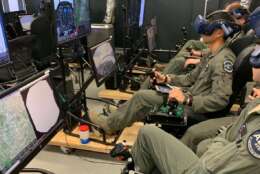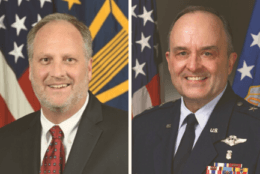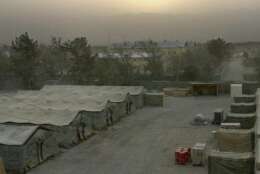On DoD
-
Toni Townes-Whitley, president for U.S. Regulated Industries at Microsoft, said industry is shifting away from providing software or products to finding more relevant mission-focused technologies and services.
November 07, 2019 -
The Air Force says it wants to use the last expected bump in funding to build a digital Air Force.
November 06, 2019 -
The Second Generation Information Technology (2GIT) blanket purchase agreements (BPAs) includes five line items such as data center, end user and network products.
November 05, 2019 -
Oracle is pressing ahead with its legal battle against the multibillion dollar cloud contract despite DoD's surprise decision to award the deal to Microsoft.
November 05, 2019 -
The Air Force is replicating its Pilot Training Next idea for helicopters.
November 01, 2019 -
For an update on this multi-year project, Federal Drive with Tom Temin spoke with Bill Tinston, the program executive officer at the Defense Healthcare Management Systems office, and Air Force Maj. Gen. Lee Payne, a physician and assistant director for combat support at DHA.
November 01, 2019 -
Two lawmakers want the Defense Department to only buy American-made drugs.
November 01, 2019 -
With more on this protest case, procurement attorney Joseph Petrillo of Petrillo and Powell joined Federal Drive with Tom Temin.
October 31, 2019 -
The Defense Innovation Unit finally shows its cards on what it's been working on the past few years.
October 30, 2019 -
DoD's chief information officer told lawmakers the White House could not have interfered with the JEDI decision because the identities of the team that made the decision have been kept secret all along.
October 30, 2019 -
In today's Federal Newscast, a long series of repairs and upgrades, the Japan-based destroyer now undergoing a series of at-sea tests and training.
October 29, 2019 -
For more on this thinking, Federal Drive with Tom Temin turned to long-time federal sales consultant Larry Allen.
October 29, 2019 -
The role of behavioral health technicians in the military dates back to World War II.
October 28, 2019 -
The Defense Department made its award, but the JEDI story doesn't end here.
October 28, 2019 -
The Army says it will put the lion's share of its enterprise network modernization money toward the 40 to 45 bases it sees as its most important "power projection platforms" over the next four years. Upgrades at its more than 200 other installations are likely to be much slower.
October 28, 2019















